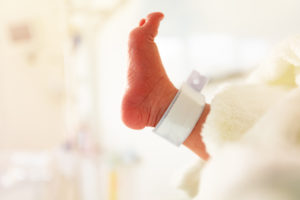
Birth injuries can turn a celebration into a traumatic event. These injuries can cause temporary or permanent disabilities to your child and can also injure or kill the mother and/or the child.
As a result of birth injuries, your child might need doctors, therapists, and even a caretaker for the rest of their life. Your child might experience mental distress because of their injuries and might never participate in many childhood or adult activities.
Read on to learn about birth injuries and the compensation you can seek for them.
How Do Birth Injuries Happen?

Birth injuries can result from physical trauma to the child or mother during pregnancy, labor, or delivery. They can injure the child, the mother, or both.
Birth injuries can happen in many ways, including physical injuries, adverse drug events, and anoxic injuries.
Physical Injuries
Physical injuries can result from maternal trauma. For example, if the mother falls due to untreated low blood pressure, the baby could suffer broken bones or other physical injuries.
Rough handling during labor and delivery can cause physical injuries directly to the baby. For example, surgical instruments used to deliver a baby can cause lacerations, bruises, and fractures.
Adverse Drug Events
Drugs administered to the mother can affect the mother’s condition and harm the baby. The mother could have an allergic reaction to a drug and go into anaphylaxis. Even if the child does not experience an allergic reaction, the mother’s allergic reaction can cause a drop in her blood pressure and respiration rate, negatively affecting the child.
The baby’s body is also at risk from drug administration. The mother and baby share blood through the umbilical cord. When doctors administer medications to the mother, the medicine can harm the baby while simultaneously helping the mother.
For example, thalidomide was administered to pregnant mothers in the 1950s and 1960s to treat morning sickness. The drug crossed into the babies’ bodies and caused lasting birth injuries.
Anoxic Injuries
Anoxic injuries, also called hypoxic-ischemic encephalopathy (HIE), happen when a baby does not get enough oxygen. The human brain can only survive about four minutes without oxygen before it suffers permanent brain damage.
If the mother bleeds, there might not be enough oxygenated blood to keep the baby’s brain supplied with oxygen. Similarly, blood might not reach the baby’s brain if the placenta detaches or the umbilical cord gets pinched.
Trauma to the baby can also cause anoxic injuries. The most common cause of anoxic injuries happens when the umbilical cord gets wound around the baby’s neck during labor and delivery. The umbilical cord squeezes the baby’s carotid arteries that feed blood to the brain.
What Are Some Examples of Birth Injuries?
Babies and mothers can suffer many different types of birth injuries, such as broken bones, nerve damage, and cerebral palsy.
Broken Bones
Broken bones usually result from rough handling during delivery. Physically manipulating the baby through the birth canal can dislocate joints or break bones.
It usually takes four to six weeks for broken bones to heal. Broken bones rarely cause complications. Occasionally, broken bones can cause blood clots to form, potentially causing a life-threatening pulmonary embolism.
Nerve Damage
Nerves carry nerve signals between the baby’s brain and body. When nerves get stretched or severed, the signals drop or misfire, causing paralysis, weakness, and a loss of sensation.
Nerve damage can result from rough handling. For example, Erb’s palsy happens when a baby’s brachial plexus nerve root gets damaged. The brachial plexus carries the nerves for your baby’s shoulder and arm. When it gets damaged, your baby might not be able to use one arm.
Some forms of nerve damage only cause temporary effects. Erb’s palsy can often clear up on its own with physical therapy. In more severe cases, your baby might need surgery or suffer from the effects of nerve damage for the rest of their life.
Cerebral Palsy
Cerebral palsy is a brain injury that interferes with the brain’s ability to control the body. It can result from brain damage during labor and delivery and can take four forms: spastic, dyskinetic, ataxic, and mixed.
Spastic Cerebral Palsy
Spastic cerebral palsy is the most common type and causes stiff muscles.
Depending on the areas of the brain affected, cerebral palsy can affect muscles in the:
- Legs
- Arms
- Face
- Torso
When the muscles of the face are affected, the child might have difficulty seeing, hearing, and speaking.
Dyskinetic Cerebral Palsy
Dyskinetic cerebral palsy causes difficulties in controlling the muscles. As a result, the child will not fully control their face, arms, hands, legs, or feet.
The lack of control can lead to slow or jerky movements, and the child might have difficulty speaking and swallowing.
Ataxic Cerebral Palsy
Ataxic cerebral palsy affects a child’s balance and coordination. The lack of coordination might affect their ability to control their hands and feet.
Mixed Cerebral Palsy
Mixed cerebral palsy combines different forms of cerebral palsy. The most common type of mixed cerebral palsy is spastic and dyskinetic cerebral palsy.
Maternal Injuries
Pregnancy, labor, and delivery are stressful for the mother’s body. The mother can suffer from high blood pressure, bleeding, and other injuries that can cause health problems or even death.
How Do You Get Compensation For Birth Injuries?
Medical malpractice happens when a healthcare provider fails to meet the professional standard of care. This means that the doctor, nurse, or hospital failed to provide reasonable care under the circumstances.
Not all birth injuries amount to medical malpractice. Sometimes, birth injuries happen despite the reasonable efforts of the healthcare providers when treating the mother and child.
But a birth injury could constitute medical malpractice if the medical staff or hospital:
- Failed to diagnose a problem with the mother or child
- Misdiagnosed a problem with the mother or child
- Made an unreasonable error in treating the mother or child
- Failed to explain to the mother what was happening so she could make a decision
Birth injuries can require expensive treatment, therapy, and assistance for the rest of a child’s life. Even with those that eventually heal, the baby’s quality of life might suffer substantially.
To discuss the compensation you can seek for your baby’s birth injuries, contact online Lopez Accident Injury Attorneys for a free consultation or call us at (727) 933-0015.


